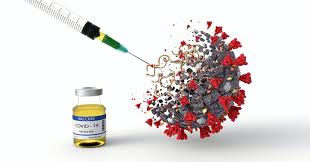Can things really change?
Can our country find a way to admit systemic racism and then
do the hard work to undue it?
Can we begin to live with our Earth, ending our suicidal
quest to dominate it?
Will we begin to honor the Indigenous Peoples of this land,
reversing their second-class status in a land that is their own?
Well, I can’t honestly answer all of these questions with a positive
answer. At least not with confidence.
But I can see some signs that make me hopeful. I want to
share two of those with you.
Example 1: U.S. Forest Service
My family thought about places to get away and enjoy a hike.
The outdoors seem to be one place where the pandemic loses its grasp over us.
Aside from a piece of fabric covering the face’s mid-section, you almost can
forget about words like “6 feet apart” and “Zoom”.
With fatherly skill, I quickly steered the conversation
toward Wheeler Peak, my selfish choice for our hike. Our tallest mountain in NM
at 13,147 feet, I had wanted to climb this for many years. We looked up the
hike and found that, at that moment, the trails in that area were closed.
Reading further, they were closed due to traditional ceremonies of the Taos
Pueblo.
Carson Forest Supervisor, James Duran stated
“It’s important that
the Carson National Forest works to support local traditional communities to
continue a traditional way of life that makes the culture of Northern New
Mexico so rich and truly unique”. We appreciate the public’s patience and
willingness to support our local tribal communities in maintaining long
standing connections to these mountains during this unique period.” (link
here)
YESSSSS!!!!!!!!
Many of us, myself included, may never have associated
public lands and the National Park System as anything beyond an attempt to
conserve and preserve the natural beauty of our country. But Indigenous
communities have a very different history with the creation of such lands.
Just as land was stolen from these people since the arrival
of Europeans, conservation efforts simply provided another avenue to trample
over these same communities. As Marcus Colchester writes, “National parks,
pioneered in the United States, denied indigenous peoples’ rights, evicted them
from their homelands, and provoked long-term social conflict. This model of
conservation became central to conservation policy worldwide.”
Making the position of the Carson Forest even more important
is the context of Taos Pueblo and the U.S. Forest Service. Just a few miles
away from Wheeler Peak is Blue Lake, known to the Taos Pueblo as Ba Whyea, a sacred site to that Tribe
used for many traditional ceremonies.
In the name of conservation, the U.S. government appropriated
Blue Lake and the surrounding area and placed it under the control of the
Forest Service. The Equivalent of The Vatican being taken away from Catholics,
Mecca confiscated from Muslims. These thefts usually came without consultation
with Indigenous communities. The struggle by Taos Pueblo to regain control of
Blue Lake similar to Standing Rock in 2016, represented Indigenous struggles
for religious freedom and the protection of sacred sites. (After 64 years of
protest, appeal, and lobbying by Taos leaders and their supporters, Blue Lake
was restored to the Pueblo in 1970.)

So, to see the Forest Service now working as a protector,
not a threat to Taos Pueblo is a victory for all of us. To see words acknowledging
that traditional ways are what make our land unique is incredible in a land
that has largely ignored and “othered” Indigenous ways at best, often working
explicitly to eradicate them completely. (“Kill the Indian, Save the Man”
policy of the U.S. Boarding Schools, for example).
Example 2: Princeton University
No, I was not about to take my family on a trip to New
Jersey. “Kids, jump in the car. We are heading to audit a weekend course at an
Ivy League institution.” Not quite.
But September
2nd letter by Princeton’s president Christopher Eisgruber to
acknowledge systemic racism caught my eye.
“Racism and the damage
it does to people of color nevertheless persist at Princeton as in our society,
sometimes by conscious intention but more often through unexamined assumptions
and stereotypes, ignorance or insensitivity, and the systemic legacy of past
decisions and policies. Race-based inequities in America’s health care,
policing, education, and employment systems affect profoundly the lives of our
staff, students, and faculty of color.
Racist assumptions
from the past also remain embedded in structures of the University
itself. For example, Princeton inherits from earlier generations at least
nine departments and programs organized around European languages and culture,
but only a single, relatively small program in African studies.”
YESSSSS!!!!!!!!
Coming from an institution that represents power and privilege,
this divergence from the default - finding ways to justify unjust systems that
serve to benefit that person/group speaking - is refreshing. It is healing. It
is needed.
So, back to those initial questions, I can say that I have
some hope that I can be a part of
making real change happen. That is the only place any of us can start –
acknowledging our own responsibility to pave a different road for our own
lives, our own words, our own actions. We can be transformed just like the
Forest Service and Princeton University to stand for undoing racism and a new
way of treating each of Creator’s beautiful creations, land/air/animals
included.
Healing awaits us, my brothers and sisters.





















